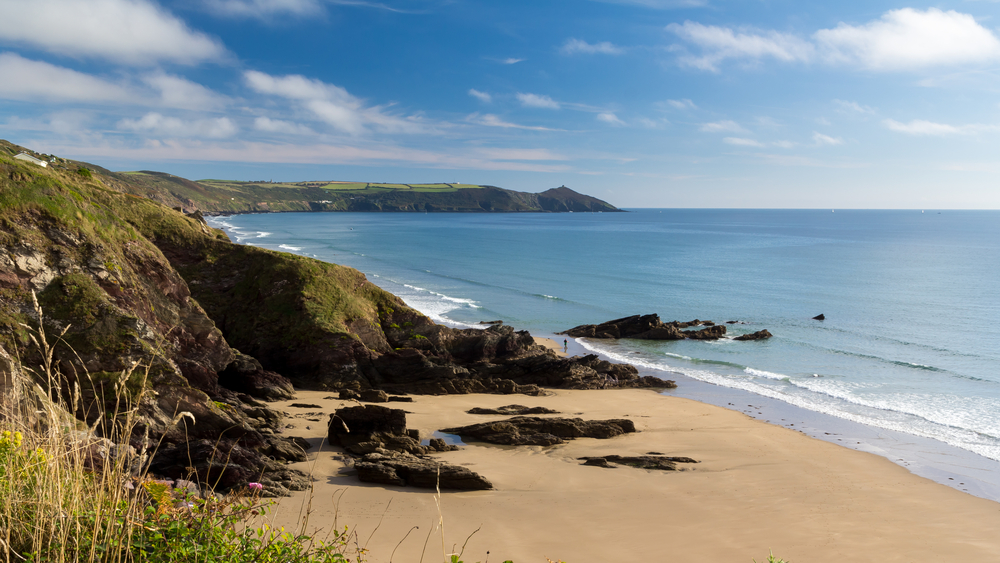With white sand running for three miles at low tide Whitsand Bay is not only one of the finest beaches in Cornwall but it is also one of the longest.
Not to be confused with Whitesand Bay on the north coast, Whitsand is a vast sweep of the south coast between the towering promontory of Rame Head and the historic little harbour of Portwrinkle.
Whitsand bay famed for its beauty and smuggling
These shores are not only famed for their beauty but also their danger, and this beach once saw more than its fair share of shipwrecks. Many were the unfortunate vessels who, during rough weather, had failed in their attempt to make it to the safe waters of Plymouth Sound.
The bay and its many small coves and villages also saw plenty of smuggling in the past too. In the 1920s the author A. G. Folliott Stokes wrote: “This Whitsand Bay has probably seen more contraband sunk in its waters and landed on its shores than any other bay of equal size in the kingdom.”
Probably the most famous ‘free-trader’ in the area was a man called Silas Finn of Portwrinkle, who famously avoided drawing the attention of the excise men by disguising himself as a woman.
Sharrow Beach and grotto
Between Portwrinkle and Freathy is a section of the bay known as Sharrow Beach, accessed by a steep path from the cliffs above. While it is a picturesque stretch of sand to enjoy this isolated beach is also hiding an unusual secret – a man-made grotto.
The grotto, known as ‘Sharrow Grot’ and was thought to have been cut out of the cliff face just below Sharrow Point by hand sometime in the 1780s. Measuring 15ft deep by 18ft wide and 7ft high it must have been a real labour of love for its excavator James Lugger, but no one is quite sure why he decided to build it.
On one of the walls of the cave however he has carved a poem which perhaps gives us some insight into his physical health and his thinking:
“But, as thou walk’st should sudden storms arise,
Red lightnings flash, or thunder shake the skies,
To Sharrows friendly grot in haste retreat,
And find safe shelter and a rocky seat.
By this, and exercise, here oft endured
The gout itself for many years was cured.”
Stone cut benches line the walls of the little cave, presumably for visitors to rest and take shelter as he suggests, although sadly these days access to the grotto, now cared for by the National Trust, is restricted. Stone cut steps also lead from the cave down onto the sand below.
The grotto makes an intriguing little distraction as you admire the splendour of this historic stretch of coast that is often neglected by visitors in favour of the coves and beaches further west.
